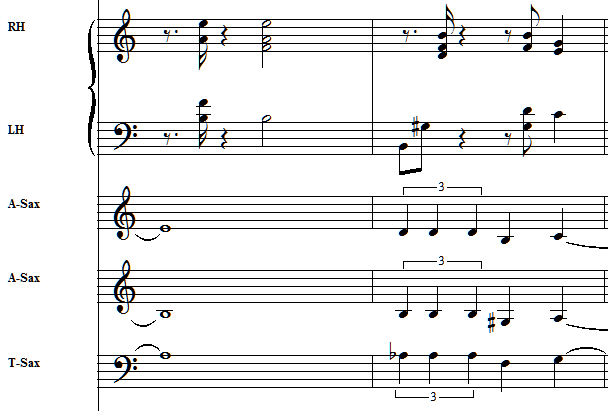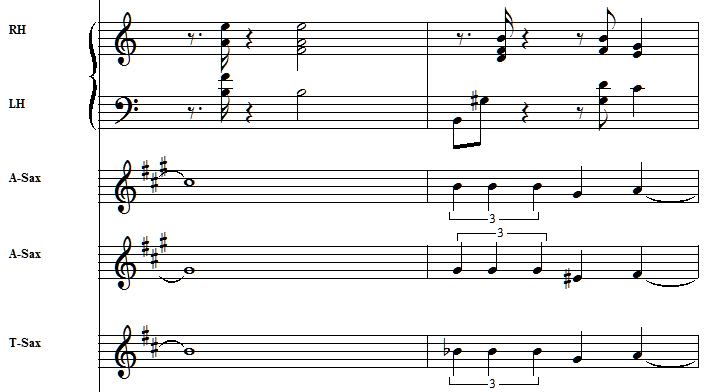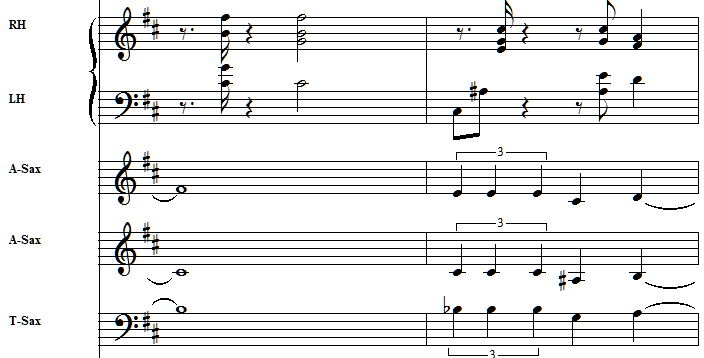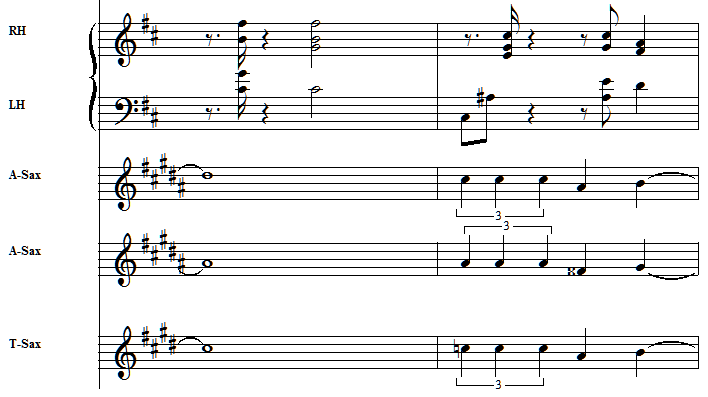|
<< Click to Display Table of Contents >> Transposing Notes |
  
|
|
<< Click to Display Table of Contents >> Transposing Notes |
  
|
Musician offers commands for two kinds of transpositions. It is important that you understand the difference between the two types of transposition so that you choose the correct command in Musician.
If we begin with a file that has the following staves in the concert key of C, with Piano (a non-transposing instrument), Alto Saxes (Eb transposing instrument), and Tenor Sax (Bb, minus 1 octave transposing instrument), this is what the score looks like in "heard" key of C, which is the actual pitches that you hear when the instruments all play:

However, for each musician to play the correct heard notes, the saxes must have sheet music that is transposed for their particular instruments. For this type of transposition, you use Staff / Transpose to each instrument's key. Transposing to the Key of an Instrument shows each instrument's notation as the musician would need it to play the piece on their particular instrument,, and is shown here:

Notice the key signature of C (no accidentals) for the RH and LH piano "hands" stays the same because the piano is not a transposing instrument. However, the Alto Sax parts and the Tenor sax have been transposed to reflect their notation requirements for their respective "natural tone".
The other kind of transposing changes the concert, or "heard", key of the entire song. Transposing Actual Pitches shifts the actual heard pitches of the notes. Thus, if we start with the same song which is in concert key of C, and use Staff / Transpose Actual Pitches to the concert key of D (two half-steps up, or one whole-step), we would see the concert pitches as shown here:

Notice how - when viewed in "Concert pitch", all staves have the key of D accidentals and the notated (and heard) pitches are raised two-half steps (a whole step) up from the original file (see the first screen shot above).
We can then Transpose the Instrument Keys for this new key-of-D file to give the following Instrument Transpositions for this song file which is now in the "heard" (concert) key of D:
